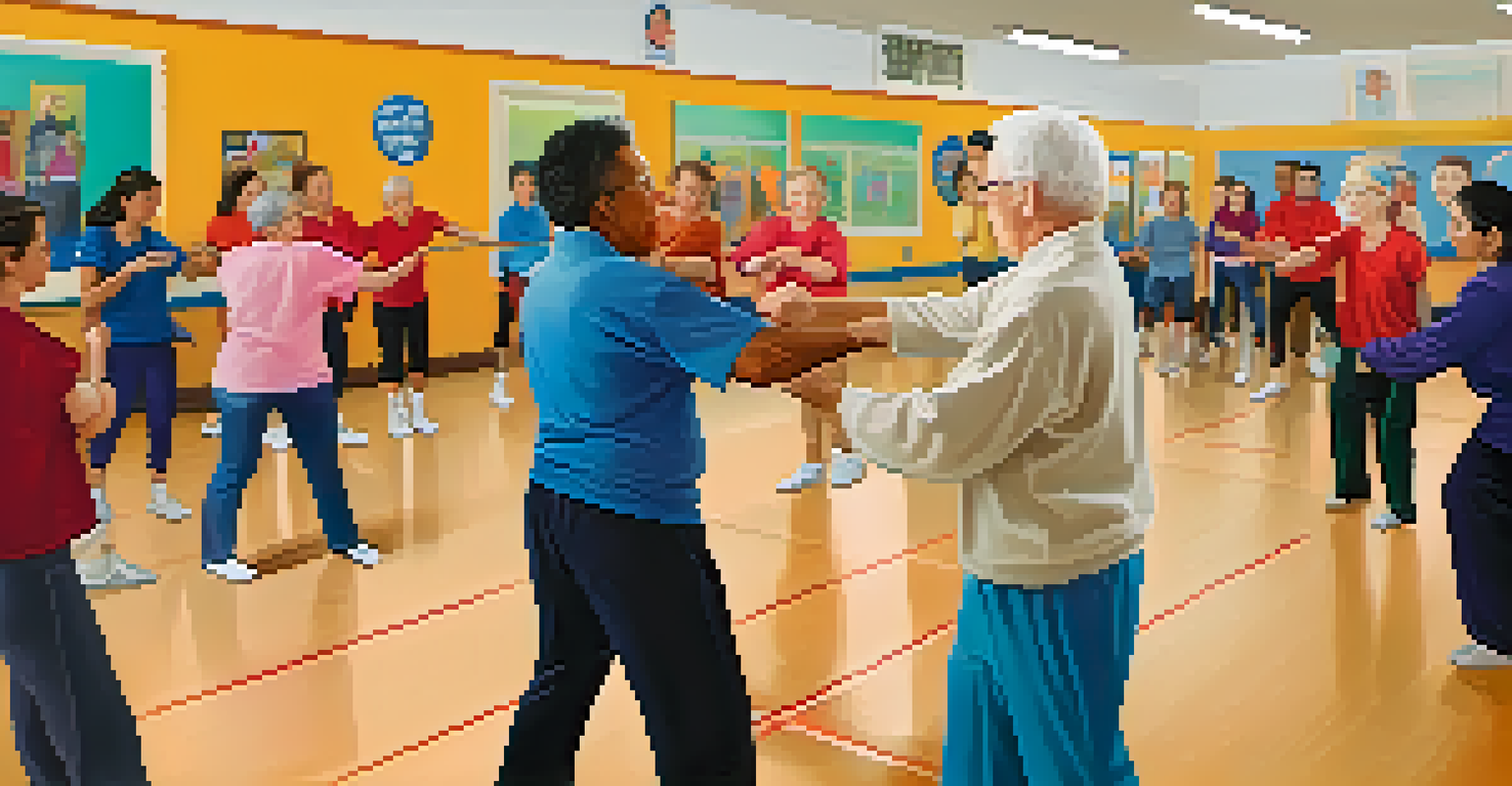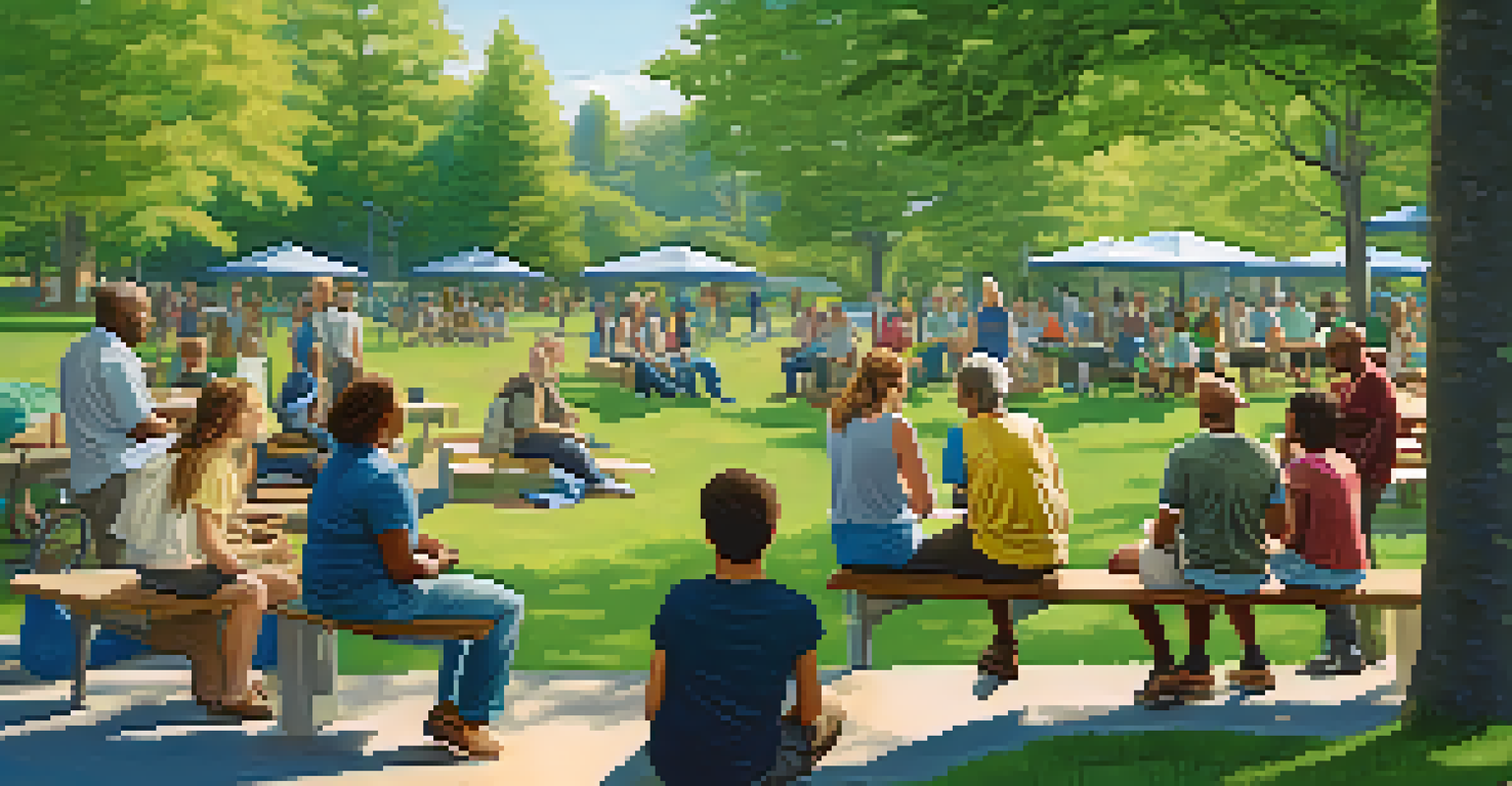Self Defense Strategies for Vulnerable Populations at Home

Understanding Vulnerable Populations and Their Needs
Vulnerable populations, such as the elderly, individuals with disabilities, and single parents, often face unique challenges when it comes to self-defense. Understanding their specific needs is crucial in developing effective strategies. These groups may have physical limitations or require additional support, making traditional self-defense techniques less applicable.
The best way to predict the future is to create it.
For instance, an elderly person might find it difficult to execute a high kick or a complex maneuver, so simpler, more practical techniques are essential. Additionally, emotional considerations, such as fear or anxiety, can also affect their ability to respond in threatening situations. Tailoring strategies to these needs ensures that everyone can feel empowered and safe in their own homes.
Ultimately, recognizing and addressing the unique vulnerabilities of these populations is the first step toward creating effective self-defense solutions. By fostering an understanding of their circumstances, we can develop strategies that not only protect but also build confidence.
Creating a Safe Home Environment
The first line of defense often begins at home. By creating a safe living environment, vulnerable individuals can significantly reduce the chances of encountering dangerous situations. Simple measures like securing doors and windows, using quality locks, and installing motion-sensor lights can enhance home security.

Consider also the layout of the home; keeping pathways clear and ensuring that exits are easily accessible can make a big difference in emergencies. Additionally, developing a safety plan that includes designated safe spaces within the home can help individuals feel more secure. This plan should outline how to respond to potential threats, ensuring that everyone knows what to do if a situation arises.
Empower Vulnerable Populations
Understanding the unique needs of vulnerable groups is essential for developing effective self-defense strategies.
A safe home environment is not just about physical security; it’s also about peace of mind. When individuals feel secure in their surroundings, they are better equipped to handle potential threats, allowing them to focus on their daily lives without unnecessary fear.
Utilizing Technology for Personal Safety
In today's digital age, technology can play a valuable role in personal safety. From security cameras to personal alarm systems, there are numerous tools available to help vulnerable populations feel more secure at home. These devices can serve as both deterrents and means to alert others in case of an emergency.
Safety isn't expensive, it's priceless.
For example, smart doorbells equipped with cameras allow individuals to see who is at their door without opening it, adding an extra layer of security. Additionally, personal safety apps can enable users to quickly contact friends or authorities if they feel threatened. It’s essential to choose technology that is user-friendly, especially for those who may not be tech-savvy.
Embracing technology not only enhances physical safety but also fosters a sense of control and independence. By integrating these tools into daily life, vulnerable populations can take proactive steps toward protecting themselves and their loved ones.
Learning Basic Self-Defense Techniques
While technology and home security measures are vital, knowing basic self-defense techniques can empower vulnerable individuals even further. Simple moves that focus on escaping rather than fighting can be incredibly effective. Techniques like yelling for help, using body weight to push away an attacker, or targeting vulnerable areas can help someone escape a threatening situation.
Many local community centers or organizations offer self-defense classes tailored for vulnerable populations, providing a safe environment to learn and practice. These classes often emphasize awareness, de-escalation techniques, and assertiveness, which are crucial in avoiding dangerous encounters altogether. Additionally, practicing these skills regularly can help build confidence and muscle memory.
Enhance Home Safety Measures
Creating a secure home environment through simple measures can significantly reduce the risk of danger for vulnerable individuals.
Ultimately, the goal of learning self-defense is not to create fear but to instill a sense of empowerment. By equipping individuals with the knowledge and skills needed to defend themselves, we can help them feel more secure and capable in their day-to-day lives.
Building a Support Network for Safety
No one should have to navigate safety concerns alone. Building a support network can provide vulnerable populations with the reassurance that help is available when needed. This network can include family, friends, neighbors, or local community organizations that focus on safety and support.
Encouraging open communication about safety concerns within this network can foster a sense of community. Regularly checking in with one another can help identify potential risks and solutions, creating a collaborative approach to safety. Additionally, organizing neighborhood watch programs or safety workshops can further strengthen these connections.
A strong support network not only enhances physical safety but also provides emotional support during challenging times. Knowing that individuals have people to turn to can significantly reduce feelings of isolation and fear, ultimately contributing to a more secure and confident life.
Practicing Situational Awareness
Situational awareness is the ability to recognize and understand what is happening around you, which is a crucial skill for personal safety. By being attentive to their surroundings, vulnerable individuals can identify potential threats before they escalate. This practice involves observing the environment, being aware of who is around, and recognizing unusual behavior.
For example, if someone notices a person loitering near their home or feels uncomfortable in a crowded place, they can take proactive steps, such as removing themselves from the situation or seeking assistance. Teaching situational awareness can empower individuals to trust their instincts and respond appropriately in various situations.
Build a Supportive Network
Establishing a support network can provide vulnerable populations with reassurance and resources to enhance their safety.
Incorporating situational awareness into daily life can significantly enhance safety. By encouraging mindfulness and observation, vulnerable populations can become more alert and confident, ultimately reducing their risk of danger.
Knowing When to Seek Help from Authorities
Understanding when to involve law enforcement is vital for personal safety. Vulnerable populations should feel empowered to reach out for help if they ever feel threatened or unsafe. This includes recognizing signs of harassment, stalking, or any suspicious activity that could escalate into a dangerous situation.
It’s important to know how to contact authorities, whether through emergency numbers or non-emergency hotlines. Having a plan in place for when to call for help can make a big difference. Furthermore, documenting incidents can provide valuable information if a situation requires police intervention.

Seeking help is not a sign of weakness; rather, it is a proactive step towards ensuring safety. By knowing when and how to reach out for assistance, vulnerable individuals can take control of their safety and well-being.